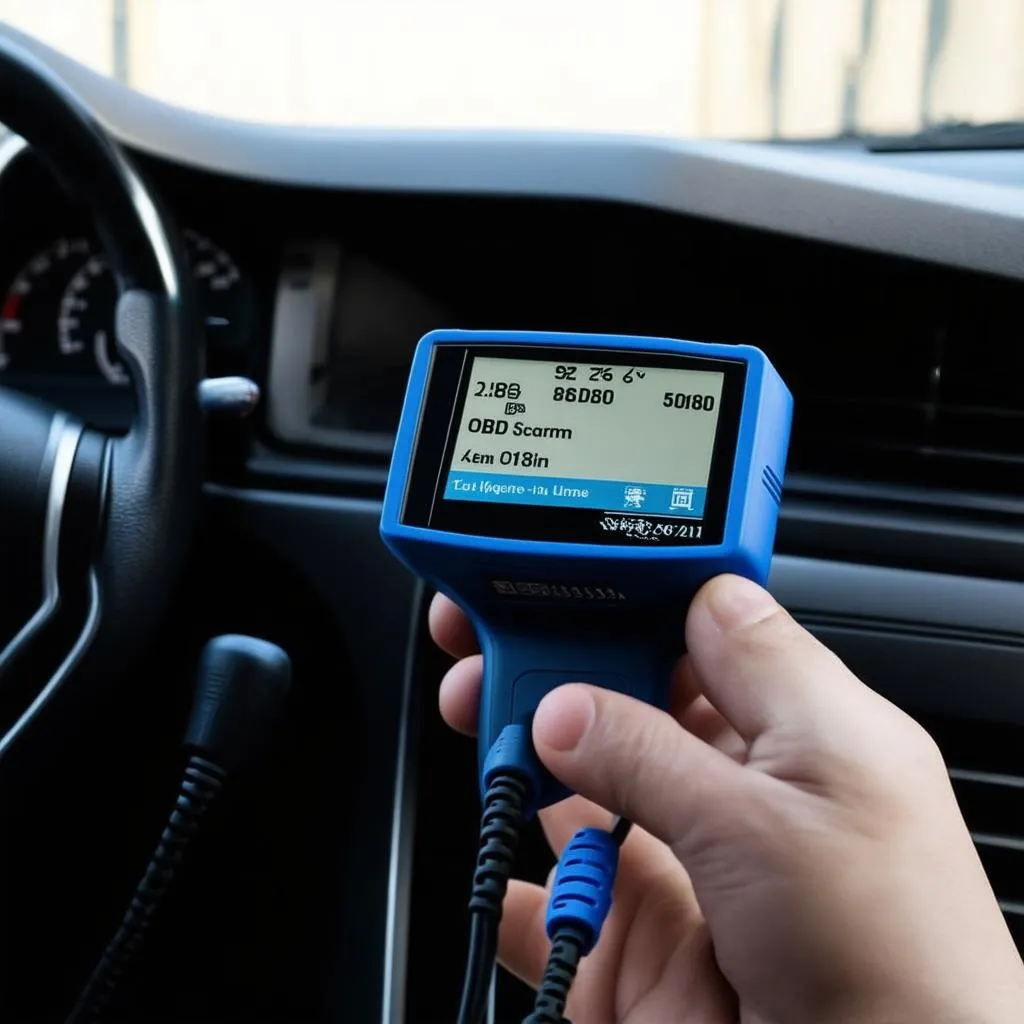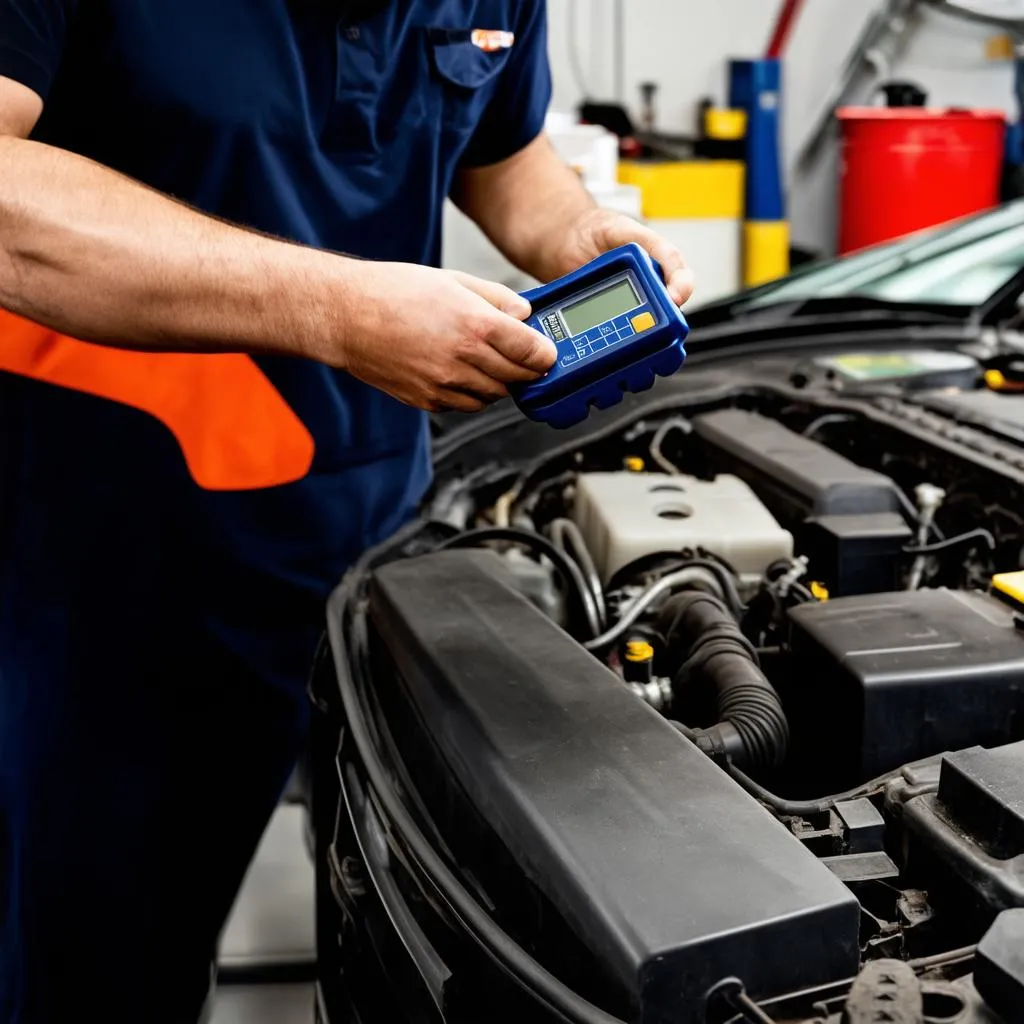“Check engine” light got you seeing red? Ever wish you could understand what your car is trying to tell you? The OBD port is like your car’s own personal translator. This little port provides a wealth of information about your car’s health and performance. But first, you need to find it!
Decoding the Mystery: What is an OBD Port and Why Should You Care?
The “OBD” in OBD port stands for On-Board Diagnostics. Think of it as your car’s brain, constantly monitoring its systems. When something goes wrong, the OBD system stores a trouble code. The OBD port acts as the communication portal, allowing you to access these codes using a device called an OBD-II scanner.
Why is this important? Knowing the location of your OBD port and how to use it can be a game-changer:
- Diagnose Car Problems: Identify issues early on and potentially save yourself from costly repairs.
- Reset Check Engine Light: Once you’ve addressed the issue, you can use an OBD scanner to reset the dreaded check engine light.
- Monitor Performance: Track your car’s fuel efficiency, engine performance, and other vital stats.
Where in the World is My OBD Port Hiding?
Most cars manufactured after 1996 have a standardized OBD-II port. While its location can vary slightly depending on the make and model, it’s typically found within easy reach of the driver’s seat. Here are the most common hiding spots:
- Under the Dashboard: Look for a trapezoidal-shaped connector, often on the driver’s side, near the steering column or pedals.
- Below the Steering Wheel: It might be tucked away beneath the steering wheel, facing down.
- Inside the Center Console: Some manufacturers place it inside the center console, either under the armrest or near the ashtray.
- Near the Fuse Box: Check the area around your car’s fuse box, as they’re often located nearby.
Still can’t find it? Consulting your car’s owner’s manual is always a good idea. It usually has a diagram showing the OBD port’s exact location.
Unlocking Your Car’s Secrets: Using the OBD Port
Once you’ve located your OBD port, you can connect an OBD-II scanner to access a wealth of information about your car’s systems, including:
- Engine and Transmission Performance
- Emissions Systems
- Airbag Systems
- Anti-lock Brake Systems (ABS)
- And more!
 OBD Scanner Connected
OBD Scanner Connected
Troubleshooting Common OBD Port Issues
Having trouble connecting to your OBD port? Here are a few things to check:
- Ensure the Scanner is Compatible: Make sure your OBD-II scanner is compatible with your car’s make and model.
- Check for a Blown Fuse: A blown fuse related to the OBD port can prevent it from working. Refer to your owner’s manual to locate the correct fuse.
- Inspect the Pins: Examine the pins inside the OBD port for any damage or bending.
OBD Ports and a Touch of Feng Shui
While there’s no direct connection between OBD ports and the ancient Chinese practice of Feng Shui, maintaining a clean and organized car interior can promote a sense of calm and control, extending even to your car’s diagnostic systems.
Related Questions
What is the difference between OBD and OBD-II?
OBD-II is the second generation of the On-Board Diagnostics system, introduced in 1996. It offers more standardized diagnostic capabilities compared to its predecessor, OBD-I.
Can I install an aftermarket OBD port?
It’s not recommended to tamper with your car’s electrical system. If you’re experiencing issues with your OBD port, consult a qualified mechanic.
What kind of OBD scanner should I buy?
There are many OBD scanners available, from basic code readers to professional-grade tools. The best choice depends on your needs and budget.
Explore More Automotive Insights
Interested in learning more about your car’s inner workings? Check out these related articles:
 Mechanic Using OBD Scanner
Mechanic Using OBD Scanner
Need Help? We’re Here for You!
Feeling overwhelmed by car diagnostics? Don’t worry, we’ve got your back! Our team of automotive experts is available 24/7 to assist you with any OBD-related questions or to help you find the perfect diagnostic tool for your needs.
Contact us on WhatsApp at +84767531508 and let us help you get back on the road with confidence!
Remember, knowledge is power, especially when it comes to your car. Understanding your OBD port is the first step towards becoming a more informed and empowered car owner.